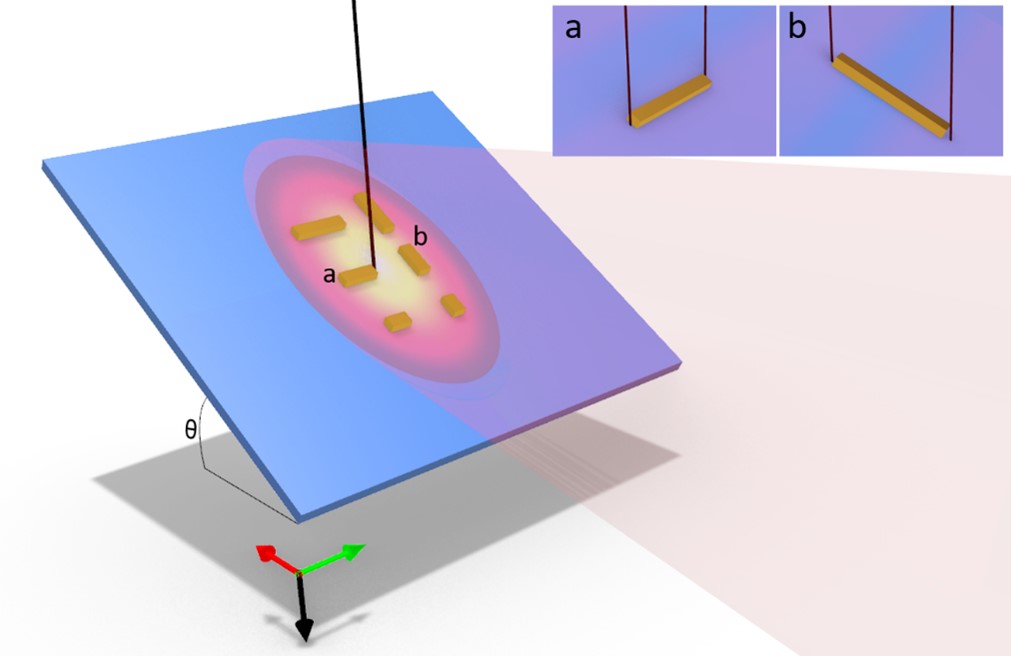Nearfield excited state imaging of bonding and antibonding plasmon modes in nanorod dimers via stimulated electron energy gain spectroscopy
Researchers from the University of Tennessee and Oak Ridge National Lab used the Waviks' Vesta to study nearfield excited state imaging of bonding and antibonding plason modes in nanorod dimers. Their work was published in The Journal of Chemical Physics.

Experimental set up schematically illustrating the orientations of lithographically patterned gold nanorods aligned perpendicular and with a component parallel to the wave vector. Unpolarized light is directed toward the sample tilted at 30° (θ), thus the sample normal is oriented 30° to the electron beam trajectory and 60° to the photon wave vector. Inset shows magnified views of the nanorods illustrating the aloof positions for (a) horizontal nanorods (b) vertical nanorods and the electric field polarization component that couples to the LSPR modes.
The researchers demonstrated that continuous wave photon stimulated electron energy gain spectroscopy is a useful tool for imaging the bonding and antibonding Local Surface Plasmon Resonance (LSPR) modes in nanoparticles. They were also able to show the importance of stimulating light polarization when trying to image LSPR modes.
Reference:
, "Nearfield excited state imaging of bonding and antibonding plasmon modes in nanorod dimers via stimulated electron energy gain spectroscopy", J. Chem. Phys. 153, 044711 (2020) https://doi.org/10.1063/5.0012260
